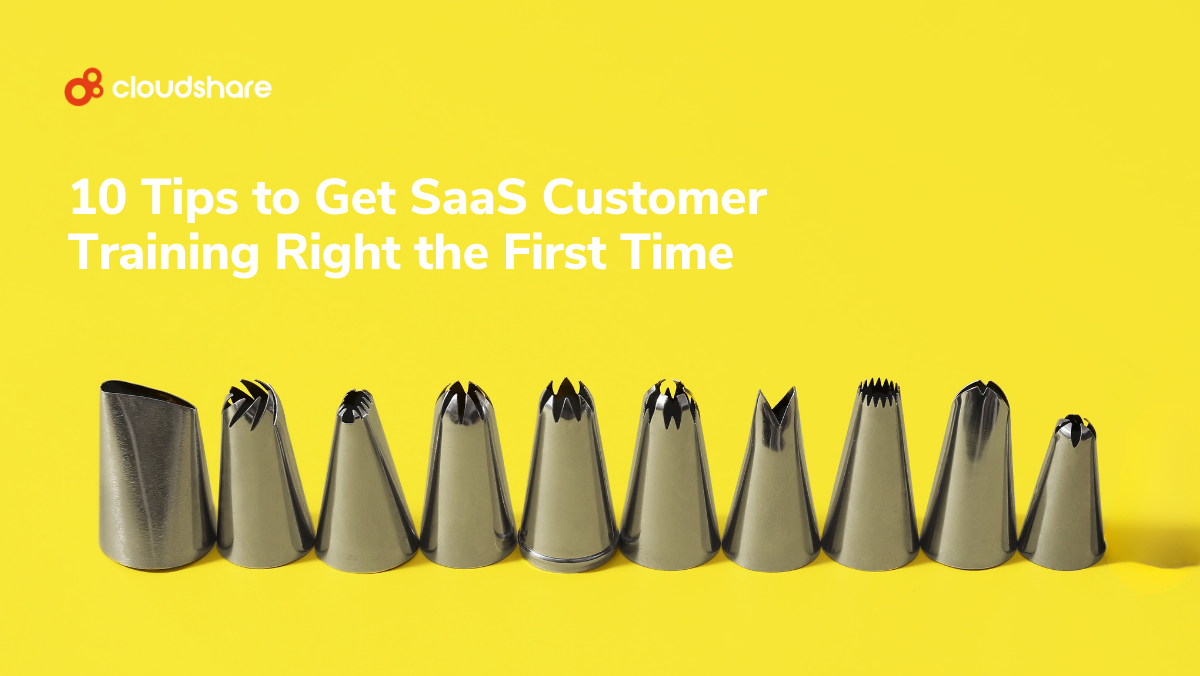
In the software as a service (SaaS) space, high-quality product training is essential not only for your employees; customer education and customer success go hand-in-hand, and it’s easy to understand why. The more a customer knows about your software, the faster they can start getting value from it. And the more value they get from it, the more satisfied, engaged, and loyal they’ll become.
Achieving those goals starts with 10 best practices for SaaS customer success training.
1. Define Your Personas
Who uses your software, and why do they use it? The answer(s) to these questions will serve as the bedrock of your entire customer education strategy. Survey your existing customers to find common threads between them, then use that information to create one or more user personas.
Also, consider leveraging information on buyer personas since some overlap might exist.
2. Audit Your Customer Interactions
Next, perform a thorough analysis of the following:
- Customer reviews
- Support tickets
- Sales interactions
- Any other communication with customers
Your goal here is to find common threads to use when developing your training content. For instance, you might find that people tend to have trouble understanding a specific feature. Or they might not even know the feature exists.
3. Segment Your Audience
Starting with your user personas, divide your users into categories. You have several options here, including:
- Role
- How a user has interacted with your software
- Features a user has struggled with
- Signup date
- Churn flags
Segmentation allows you to focus more on your development efforts, as you will need to create content only for specific groups.
4. Focus on Value
Why should customers care about your training? What strategic value does it offer? How will learning more about your software help them meet their business goals?
Customer education should be developed with these questions in mind and supported by supplementary materials such as customer success stories and use cases.
5. Go Beyond Onboarding
Onboarding is one of the most important touchpoints in the customer journey. But it’s only a touchpoint. Don’t treat it as the be-all and end-all of customer education. Instead, train customers throughout their entire lifecycle.
6. Promote Internal Collaboration
Customer education isn’t the sole domain of your customer success team. Everyone from subject matter experts and product managers to salespeople should be involved in developing customer training content. This collaborative approach will give you a clearer picture of each persona’s pain points and help you develop more relevant content.
7. Mix and Match Training Modalities
Everyone has different learning needs and preferences. Your customer education strategy needs to account for this. People who want to learn more about your software should have multiple options, including:
- Self-paced training
- Instructor-led courses
- Webinars
- Infographics
- Video tutorials
- Written documentation
- Community support
8. Use Interactive Content
Hands-on training will always be more engaging than passive learning, especially when it comes to software. With that in mind, consider incorporating interactive training elements such as:
- Live onboarding checklists
- Guided walkthroughs
- Context-sensitive in-app tooltips
- Gamification elements such as achievements or certifications
- Simulated scenarios
- Virtual sandboxes
You probably noticed that some of the examples above could fit into daily use just as easily as a training session. That’s no accident. The best training allows people to learn by doing without interrupting their workflows.
9. Always Follow Up
Whenever a customer completes a course or certification, don’t forget to send them a quick follow-up email thanking them for their participation and including a few “next steps.” You can also use email newsletters to introduce new training content and inspire more people to register and attend.
10. Measure, Iterate, and Improve
No customer education strategy, no matter how successful, is perfect. Improvements must always be made, whether by eliminating bottlenecks from your onboarding or filling content gaps. Pay close attention to the training program’s learning outcomes and impact on your business.
Here are some of the metrics you’ll want to focus on:
- Retention and churn
- Average customer lifetime value
- NPS and CSAT scores
- Completion rate
- Time to completion
Beyond that, feedback can be collected through customer surveys. These will provide insights on how you might improve your training and your software.
Next Steps: Explore Best Practices for Pricing Customer Training
Customer education and training are essential if you want to turn buyers into loyal, long-term customers.
Looking for additional tips to transform your training? Then you’ll want to review some of these SaaS training best practices.
Check out Customer Training Pricing and Packaging Best Practices for guidance on developing premium customer education content. Then why not explore 5 Tips for Improving SaaS Retention Rates with Customer Training?




